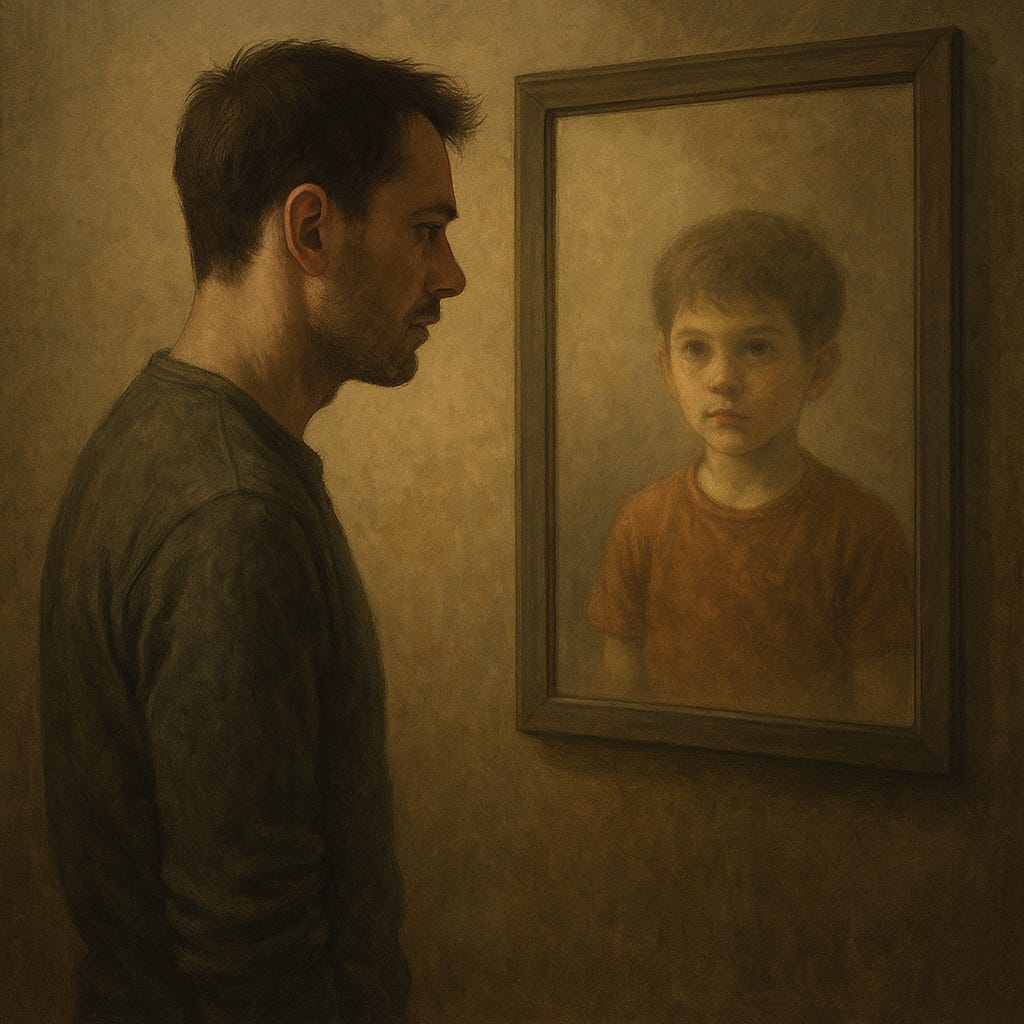Once upon a time, we all became storytellers—without knowing it.
And every day after, we told stories with our bodies, our silences, our loyalty, our shame. We told them before we could write. Before we could defend ourselves. Before we had a voice we trusted.
Until one day, someone asked us to speak up—or to stay quiet. To sit still. To grow up. To not cry. To be the strong one. To be the smart one. To be the peacemaker. The problem child. The favorite. The invisible.
Because of that, we learned the story that got us through. The story that made us lovable. Safe. Useful. We told it so often that we forgot it was a role, not a truth.
Because of that, many of us became lawyers, healers, advocates, counselors. We carried other people’s stories with skill—while never fully recognizing the one we were still carrying from childhood. The one running in the background.
Until finally, something didn’t work. A case. A client. A cause. A truth. And we had to ask:
What was the first story I ever told? And is it still choosing the roles I play today?
The First Story Isn’t Written—It’s Rehearsed
In Role Theory, developed by J.L. Moreno, roles are the building blocks of the self. We do not start with a personality—we start with roles. And these roles develop through early interactions with caregivers, family systems, schools, and power structures.
These stories are not cognitive. They are embodied rehearsals.
The child who hides their tears may become the “Unshakeable Advocate.”
The child who had to mediate conflict may grow into the “Peacemaker Lawyer.”
The child who was never believed may become the “Voice-for-the-Voiceless.”
These roles are gifts. They carry survival and strength. But when they go unexamined, they become prisons—limiting what stories we’re drawn to, and how we tell them.
Why This Matters in Advocacy
Every advocate brings a story into the room—whether they speak it or not.
That story shapes:
What kinds of clients we’re drawn to.
How we interpret resistance.
When we over-identify, and when we detach.
What cases we can’t let go of—and which ones we fear.
In psychodrama, we say: the body remembers what the mind cannot yet say. This means we may still be performing our first story—in court, in meetings, in moments of high stress—even if the script has changed.
Until we confront that first story, we may not be free to choose new roles. We may not even realize how much power it still holds.
Closing Thought
We don’t escape our early roles. But we can befriend them, rehearse new ones, and bring awareness to the blueprint behind our advocacy. You are not just a lawyer, counselor, teacher, or leader. You are the grown-up version of someone who learned early how to listen, how to fix, how to protect, how to disappear.
Building The Case means recognizing that first role—and choosing, with presence and practice, whether it still serves the story you’re trying to tell today. To free your voice, meet the one who first silenced it. To shape new stories, honor the old one that kept you alive.
See you next week.
—Leigh
References
Moreno, J. L. (1953). Who Shall Survive? Foundations of Sociometry, Group Psychotherapy and Psychodrama. Beacon House.
Moreno, J. L. (1961). The Words of the Father. Beacon House.
Knittel, M. G. (Ed.). (1997). The Quintessential Zerka: Writings by Zerka Toeman Moreno on Psychodrama, Sociometry, and Group Psychotherapy. Taylor & Francis.
Johnson, L. E. (2025). Building The Case: Storytelling When Facts Are Fixed and Stakes Are High.
Van der Kolk, B. A. (2014). The Body Keeps the Score: Brain, Mind, and Body in the Healing of Trauma. Viking.



